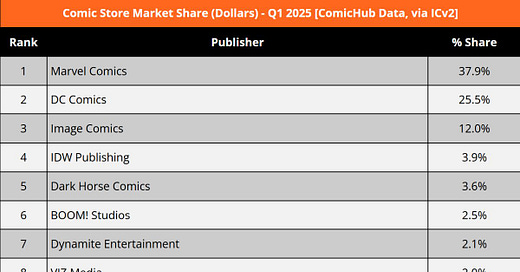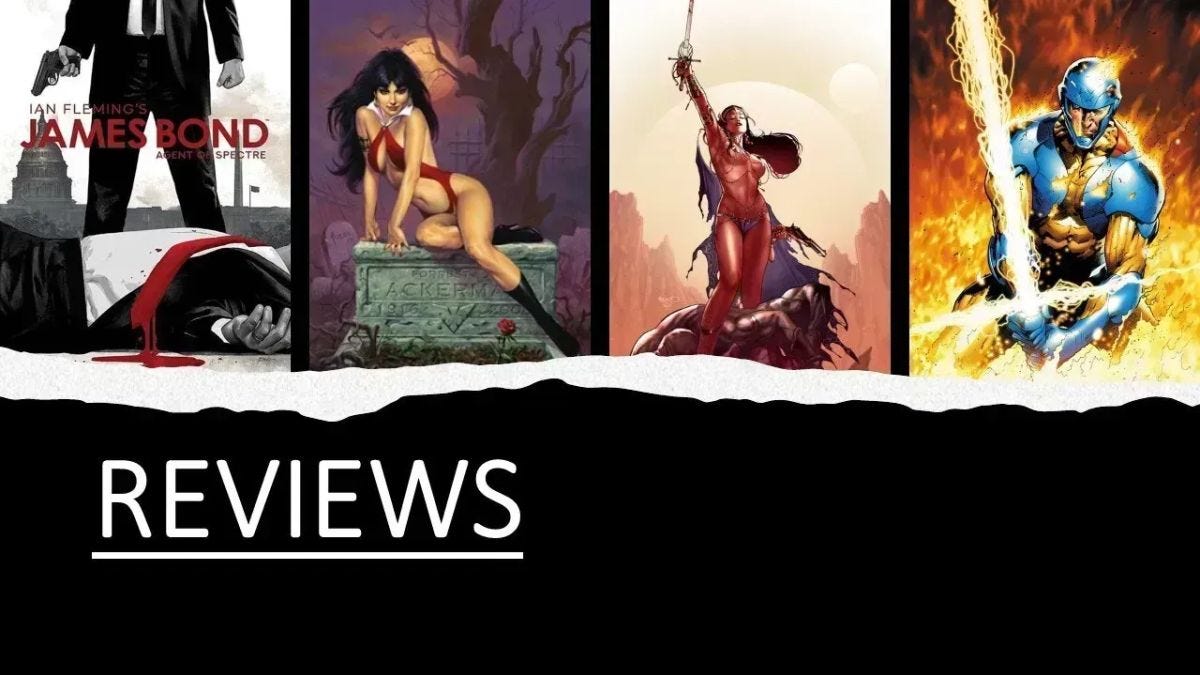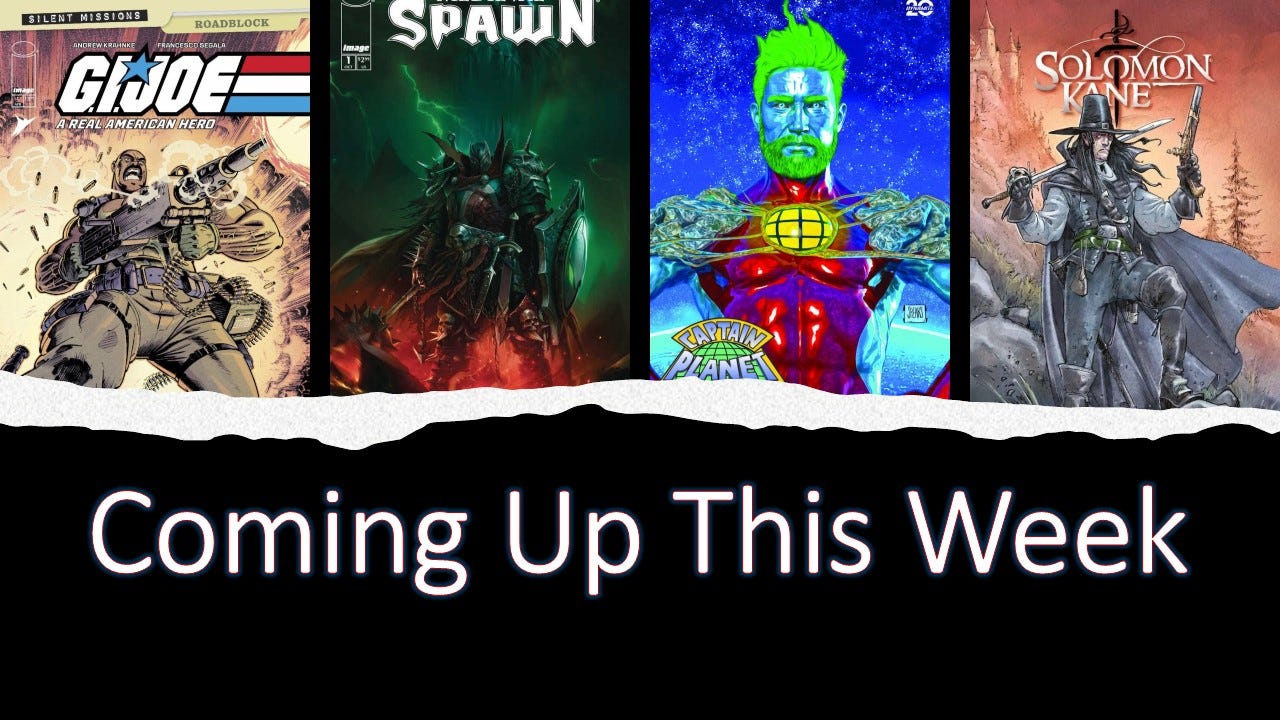Good morning, my friend,
ICv2 released its latest Comics Publisher Market Share Metrics, courtesy of Comichron sales data, to highlight which Publishers make the most sales across their titles.
Unsurprisingly, Marvel tops the list for Q1 2025, and not only did it top the list, it cut a bigger piece of the attention pie over every other Publisher.
Did Marvel win the attention race because it has the best books, the best creators, and the best reader experience? No, not by a long shot.
If anything, it’s the opposite. Marvel’s lineup of titles and creators has steadily dropped in quality over the last few years. Storylines and events flop, the synergistic divide between artist and writer is bigger than ever, editorial control and skills are lower than ever, and the physical books feel like they were printed on gently used tissue paper.
So, why? Why is Marvel at the top, and why did it gain dominance in Q1 2025, when the Top 10 Best Selling books in March were dominated by DC Comics?
In a word, habit.
Marvel created a range of characters, built a fanbase for those characters, and kept printing comics about those characters month in and month out. You'd be hard-pressed to find a big difference between the dogmatic loyalty of Spider-Man fans and Philadelphia Eagles fans.
Fans, once they reach a point of passion, will make a habit of coming back to a title no matter how low the quality or standards sink. Until the value of the comic reaches a breaking point with the target readers, they just won’t stop buying.
Well, Marvel isn’t going to stop capitalizing on the goodwill of its loyal readers, but the other Publishers can look at how Marvel created such a fervent fanbase and do the same to make the fight for a bigger slice of the attention pie a little fairer.
Pick A Genre, Any Genre
When you hear the name Marvel (or DC Comics), what do you think of?
That’s right. Superhero comics. For better or worse, the Big 2 are synonymous with cape comics because that’s the core genre that put them on the map and kept them there.
If a Publisher wants to compete for market share, it has to plant its flag on a core genre and push it to the hilt.
Examples - Mad Cave, Dynamite, Titan Comics
For example, Mad Cave’s biggest hits in the past have all centered around action-oriented fantasy. Titles like Battlecats, Honor & Curse, and Hunt.Kill.Repeat. all center around a fantasy setting and premise but inject a fair amount of battle action.
However, Mad Cave has drifted in different directions by bringing in multiple creator-owned titles from multiple creators that stretch their core all over the map. Now, if you ask what Mad Cave is known for, there is no clear answer.
If Mad Cave were to pick a core genre, let’s call it ‘Heroic Fantasy’, and curate a selection of titles that fit within that realm, Mad Cave would match what they produce to a fan avatar they can establish a lasting connection with.
How about good old Dynamite? One of our favorite Publishers has enough market share to show up on the report, but only 2% compared to Marvel and DC combined. That means for every 100 customers who walk into an LCS, only 2 will buy something from Dynamite.
Dynamite has the same problem as Mad Cave, but Dynamite is older and has a more familiar track record. If you ask the average comic reader today what Dynamite is known for, you’d get a mix of answers that are partly correct.
Peel back the layers of their publishing cycle to define the answer of what makes Dynamite who they are, the answer falls to Red Sonja, Vampirella, and a weird mix of titles that contain violence and titillation.
Dynamite would benefit by creating a focused vision and strategy that says, “We are ‘Grindhouse Pulp'," as an example. That vision may not appeal to everyone, but it will appeal to a definable group of would-be fans. Vampirella fits that bucket, as does Red Sonja, Evil Ernie, and a host of other titles Dynamite publishes.
Last but not least, Titan Comics has a hit on their hands with Conan, but their category of titles is all over the map. Life Is Strange adaptations, Doctor Who stories and a series of Blade Runner tales that extend that universe will give a new reader a headache trying to figure them out.
What can Titan do to resolve the confusion? Pick a core genre such as 'Literary Pulp Noir', and focus on comics that fit closely in that space. Conan, Blade Runner, and all the Hardcase imprint titles would fit neatly into that bucket. Most of their bigger hits are adaptations or extensions of literary works, so why not lean into it?
Here’s an example of a Publisher that gets it right - Dead Sky Publishing. DSP makes what you would call Western-themed Splatter Horror, which is horror containing a lot of messy gore in a Western setting. DSP isn’t huge, probably because its niche is small, but its name is synonymous with what it produces. Every Publisher should focus on being synonymous with something they do best.
To be clear, there’s no reason a Publisher can’t branch out into a variety of genres, but the main thing needs to be the main thing. Solidify the core genre, get the fans thinking that Publisher A is Synonymous with Genre B, then branch out as finances and overlap in fan interests dictate.
The goal here is to train the readers on a Publisher’s brand, so start by teaching readers what the brand means beyond the shape of the company logo.
Habits Take Time And Consistent Persistence
Miniseries aren’t going to create fan loyalty.
They just won’t. Stop thinking in raindrops, and start thinking in streams.
The reader establishes a habit of seeking out a Publisher’s titles when they know to expect regular output with consistent quality. It doesn’t have to be monthly, but quarterly is the bare minimum to remain top of mind, and even quarterly is a stretch.
Marvel and DC own the pie because they keep the runs going no matter how terrible. Collectors like unbroken runs, and fans want something to look forward to.
A Publisher that doesn’t prioritize ongoing titles is asking for trouble. A smoker doesn’t get hooked on one cigarette. An alcoholic doesn’t get hooked on one Rum & Coke.
The only person who gets hooked after one hit is a crack addict, but trust me, there isn’t any comic that’s as powerfully addictive as crack.
“But this miniseries won an Eisner!”
Readers don’t care about Eisners because most readers have never heard of the Eisners. Awards don't move the needle in terms of comic sales. Do you know what does move the needle? Word of mouth and an ongoing release schedule.
Make multiple comics good enough for people to like and recommend, and make them ongoing.
You can’t build a loyal fanbase with a six-issue miniseries.
What If You Really, Really Want To Do Superheroes?
That’s fine. None of this advice changes.
Do you know what does change? The timeline.
If a Publisher desperately wants to compete against Marvel and DC, it will take years upon years to steal that precious market share away.
Dead Sky Publishing made its brand association pretty quickly because the competition for Western-themed Splatter Horror is low. When you go up against the behemoth that is Marvel, the lead time to make a dent is much bigger.
It can be done. I’m not saying it can’t, but the uphill climb is much steeper and taller.
What’s the alternative? Plant your flag in a different genre that happens to have superheroes in it. Almost all of Marvel and DC’s superheroes have origins rooted in either magic or science fiction, so pick or create an adjacent genre and let your supers fly.
The Big Idea
If you have any marketing experience, you already recognize the signs. The whole point of this article is to wake Publishers (and indie creators) up to the importance of building a brand.
A brand isn’t a logo, a font, or the color coding of your marketing materials.
A brand IS what the readers think of when someone stops them on the street and asks, “What is Publisher X known for?”
Start by picking a genre - make one up if you have to - and curate all your creators and titles around that identity until your publishing brand is synonymous with a core genre.
Then, keep your loyal fanbase happy with ongoing titles as the foundation. Avoid branching out until the base is solid.
Marvel and DC own the pie of reader attention, but it doesn’t have to stay that way. Learn from the Big 2’s tactics, avoid their mistakes, and watch that market share grow.
-Gabe
Next, our Pick of the Week for the most entertaining comic is…
If you’re a subscriber to our podcast, the audio version of this review is already live. If you’re not a subscriber, we host our feed on multiple podcast platforms for your convenience.
Also, if you’d rather listen right here on Substack, make sure to subscribe to this newsletter to get the notification for the next episode.
Now, let’s get on to this week’s reviews (and a little catch-up)
G.I. JOE: A REAL AMERICAN HERO – SPIRIT – Review
GRIMM FAIRY TALES (VOL. 2) #95 – Review
[Pick of the Week] CONAN THE BARBARIAN #20 – Review
Did you see a comic review for a title you didn’t know existed?
Did you see a comic review for a title a friend should hear about?
Tell your friends by clicking on the ‘Share’ button below!
Captain Planet #1 (Dynamite Comics)
G.I. Joe #6 (Image Comics)
G.I. Joe: A Real American Hero - Roadblock (Image Comics)
Medieval Spawn #1 (Image Comics)
Universal Monsters: The Mummy #2 (Image Comics)
Solomon Kane: The Serpent Ring #2 (Titan Comics)
Grimm Fairy Tales: Once Upon the End of Time #1 (Zenescope)
Marvel Viewers’ Choice (Subscribe to our YouTube Channel to vote)
DC Viewers’ Choice (Subscribe to our YouTube Channel to vote)
Thanks for your support. Please share the handy dandy ‘Share’ button above with everyone you can. Your support ensures we can keep bringing you great content for a very long time.
Also, follow us on all the socials (Facebook, Instagram, Twitter, etc.) via @ComicalOpinions
Have a great day!




